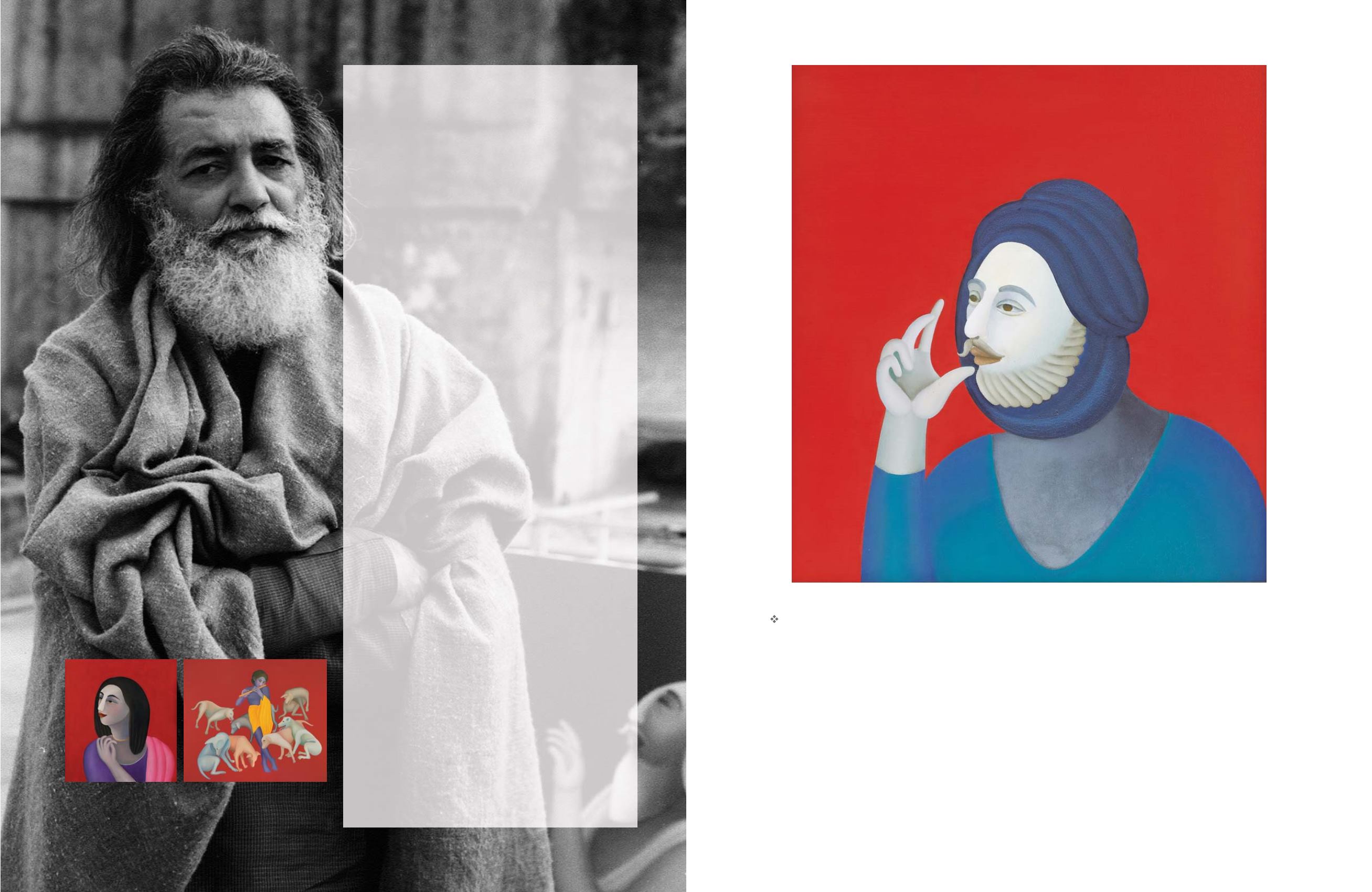

72
73
M
anjit Bawa’s art, like the artist himself, was
a sensitive and complex amalgamation
of influences that were vast and eclectic.
Entirely figurative throughout his career, his work was
deeply rooted in poetry and philosophy. For technique,
he drew upon Mughal, Rajput and Pahari miniatures,
as well as silk‒screen printing, which he studied in
Britain. For inspiration, he dove into stories from Indian
mythology, as well as oral traditions of story‒telling and
Sufi mysticism—achieving a transcendental quality in
his works. By absorbing each of these elements, and a
rigorous training in figurative drawing at the School of
Art in Delhi, Bawa began distorting forms and created
stylisations that were his own.
In the present lot, Bawa employs the same fluid,
almost boneless quality that his figures of humans and
animals are known for. Placed against a bright red, flat
background, which fellow artist Jagdish Swaminathan
likened to folk theatre backdrops, Bawa succeeds in
creating an image that appears to be in “animated
suspension. As the image is revealed, the backdrop itself
becomes the enactment.” (J Swaminathan, “Dogs Too
Keep Night Watch,” S Kalidas, Bhavna Bawa et al.,
Let’s
Paint the Sky Red: Manjit Bawa
, New Delhi: Vadehra Art
Gallery, pp. 36‒37) With no indication of time, place or
narrative, the figure in the present lot appears eternal,
as if he could be part of a historical, or conversely,
contemporary setting. “Manjit’s art was not so much
narrative as it was tersely idiomatic. Short staccato
phrases pregnant with as many possibilities as the reader
could read into them... Yet, with just the right gesture or
a twist of the rubbery body his magical paintings could
encapsulate whole Puranic legends and folk tales with
a subversive sense of humour.” (Kalidas, “Let’s Paint the
Sky Red,” S Kalidas, Bawa et al., p. 19)
Around the same time when the present lot was
painted, Bawa had a highly successful exhibition in
Hong Kong. According to his biographer Ina Puri, “This
was the first time we realized the potential of Indian art,
especially Manjit’s, had in the Far East.” (Ina Puri,
In Black
and White: The Authorized Biography of Manjit Bawa
,
New Delhi: Vikings/Penguin Books India, 2006, p. 227)
Untitled
, 1995
Saffronart, New Delhi, 21
September 2017, lot 21
Sold for INR 84 lakhs ($133,333)
Untitled
, 1992
Saffronart, Mumbai, 24 February 2016,
lot 11
Sold for INR 3.24 crores ($476,471)
PROPERTY FROM AN IMPORTANT PRIVATE COLLECTION, HONG KONG
49
MANJIT BAWA
(1941 ‒ 2008)
Untitled
Signed and dated 'Manjit Bawa 2002' and signed in Punjabi (on the reverse)
2002
Oil on canvas
25.5 x 23.5 in (64.5 x 59.5 cm)
$ 70,000 ‒ 90,000
Rs 44,80,000 ‒ 57,60,000
PROVENANCE:
Indian Contemporary Gallery, Hong Kong


















